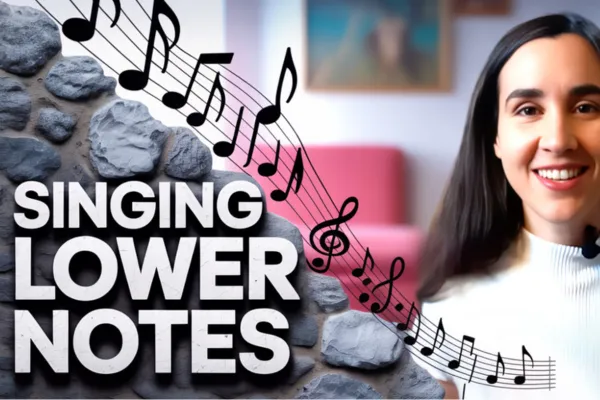
How to Sing Lower Notes as a Soprano: 3 Key Strategies
How to Sing Lower Notes as a Soprano: 3 Key Strategies
If you're a soprano who struggles to hit those rich, low notes — you're not alone. Whether it's singing along to male artists or covering female vocalists like Karen Carpenter or Beyoncé in Halo, it can feel frustrating when your voice doesn’t quite reach the depth you want. The good news? You can develop your lower range with the right approach.
This blog will walk you through three essential concepts and exercises that will help you sing lower notes with more ease, power, and control.
🎯 1. Your Vocal Registers Work Together
We often talk about vocal registers in terms of "chest voice" and "head voice." Another way to describe them, which gives us a clearer picture of what’s happening physically, is:
Mass-Dominant Register (chest voice)
Tension-Dominant Register (head voice)
These terms refer to which muscle group is primarily active when producing pitch:
In the mass-dominant register, the vocalis muscle inside the vocal folds is more engaged.
In the tension-dominant register, the cricothyroid muscle plays a larger role by stretching the vocal folds.
Importantly, these muscle groups don’t work in isolation. Even when singing in one register, the other is still active to a degree — it's a push-pull relationship. This leads to an important insight:
✅ To expand your low range, you need to work on your high range — and vice versa.
Both strength and flexibility are needed in your vocal muscles, and developing one end of your range supports the other.
🛠️ Exercise: Glissandos (Vocal Slides)
A great place to start is with glissandos — smooth slides from one pitch to another.
Try sliding over the span of an octave, going both up and down in one fluid motion:
🎵 “Ooo” (slide from high to low and back up)
Avoid jumping from note to note. You want to pass through every note in between, as this builds flexibility between the involved muscles and helps “close the break” in your range.
💪 2. Train the Vocalis Muscle the Right Way
The vocalis muscle plays a key role in low notes. Interestingly, unlike most muscles in the body, it doesn’t increase in size — which is a good thing! We don’t want our vocal folds to bulk up.
Instead of getting bigger, the vocalis muscle improves through:
Greater contraction strength
More fine-tuned control (differentiation)
This allows you to engage just enough muscle for each note — no more, no less — which makes your voice both efficient and expressive.
🎯 Quick Activation Exercise:
Breathe in and raise your arms out to the sides.
While singing a low note (like “ah”), bring your hands gently toward your shoulders.
This activates your biceps, which can have a beneficial reflexive effect on the vocalis muscle.
Use this while singing scales or warm-ups to increase awareness and engagement in your voice.
🔁 3. Use the Right Vowels, Tempos, and Intervals
When building your low range, the “ah” vowel (as in “father”) is your friend. Keep your mouth open and relaxed.
Use slow scales with small intervals (like a five-note scale) to build strength gently and gradually in your lower range. Watch the video for a demonstration!
Avoid consonants at the very bottom of your range, especially in octave 3 for sopranos, as they can add unnecessary tension. Stick with pure vowels or very soft consonants (like “m” or “w”) if needed.
Once you've trained the muscle and feel more comfortable:
Isolate the low passage of the song you're working on.
Sing it on a vowel like “ah” or “uh.”
Only once it’s stable, add the consonants and lyrics.
This progressive layering helps build both stability and confidence.
✅ Recap: What You Need to Do
Train both your low and high range — they support each other.
Focus on muscle flexibility and strength, especially in the vocalis.
Start with glissandos, then move to slow, small-interval scales on open vowels.
Introduce lyrics only after your vocal system is ready.
With consistent, targeted practice, even sopranos can develop rich, expressive low notes — without strain and without compromising vocal health.
💬 Got questions or want me to cover another topic? Leave a comment or reach out!
🎥 Prefer video? Watch the full tutorial here
